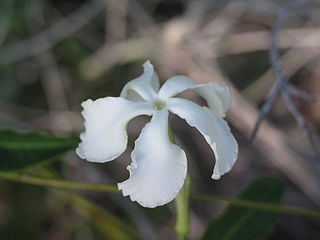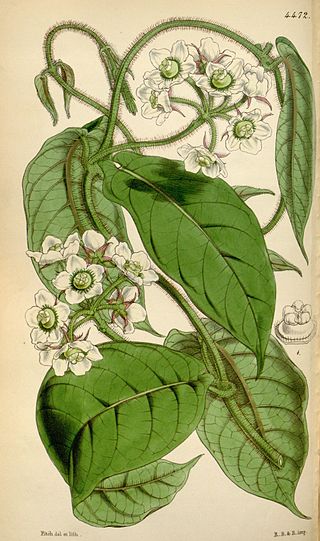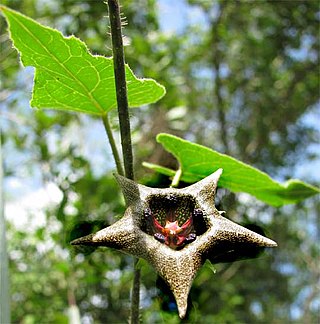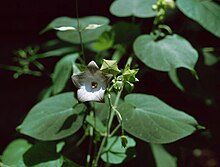
Cameraria is a genus of plants in family Apocynaceae, first described for modern science by Linnaeus in 1753. It is native to southern Mexico, Central America, and the West Indies.

Peteravenia is a genus of Mesoamerican plants in the tribe Eupatorieae within the family Asteraceae.
Trigonospermum is a genus of Mesoamerican plants in the family Asteraceae.
Espejoa is a genus of Mesoamerican flowering plants in the daisy family.
Wamalchitamia is a genus of Mesoamerican flowering plants in the family Asteraceae.

Rumfordia is a genus of Mesoamerican plants in the tribe Millerieae within the family Asteraceae.
Philactis is a genus of Mexican plants in the tribe Heliantheae within the family Asteraceae.

Fernaldia is a genus of flowering plants in the family Apocynaceae, first described as a genus in 1932. It is native to Mexico and Central America.
Prionosciadium is a genus in the carrot family, Apiaceae. It is endemic to Mexico. The plants are biennial herbs with large taproots.
Pinochia monteverdensis is a plant species native to Costa Rica, Guatemala and Oaxaca.

Echites is a genus of flowering plants in the family Apocynaceae, first described as a genus in 1756. It is primarily native to Mexico, Central America, the West Indies, and the US State of Florida.
Laubertia, a genus of plants in the family Apocynaceae, was first described 1844. They are native to Mexico, Central America, and South America.
Laxoplumeria is a genus of plants in the family Apocynaceae, first described as a genus in 1947. They are native to Panama and South America.

Fischeria is a plant genus in the family Apocynaceae, first described as a genus in 1813. It is native to South America, Central America, southern Mexico, and the West Indies.
Tassadia is a genus of plants in the family Apocynaceae, first described as a genus in 1844. It is native primarily to South America, with one species extending north into Central America, S Mexico, and Trinidad.

Macroscepis is a genus of plants in the family Apocynaceae, first described as a genus in 1819. It is native to Latin America and the West Indies.
Pherotrichis is a plant genus in the family Apocynaceae, first described as a genus in 1838. It is native to Mexico and Arizona.
- Pherotrichis leptogeniaB.L.Rob. - Jalisco
- Pherotrichis mixtecanaBrandegee - Oaxaca
- Pherotrichis schaffneriA.Gray - San Luis Potosí, Cochise County in Arizona

Dictyanthus is a genus of plant in family Apocynaceae, first described as a genus in 1844. It is native to Mexico and Central America
Rubus liebmannii is a Mesoamerican species of brambles in the rose family. It grows in southern Mexico and Central America.
Rubus schiedeanus is a Mesoamerican species of brambles in the rose family. It grows in southern Mexico and Central America.








